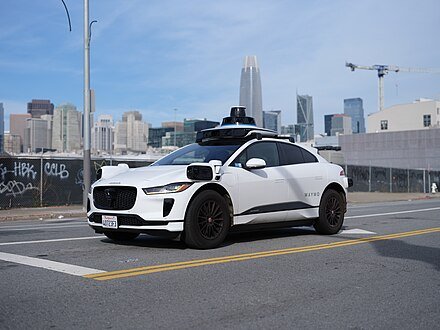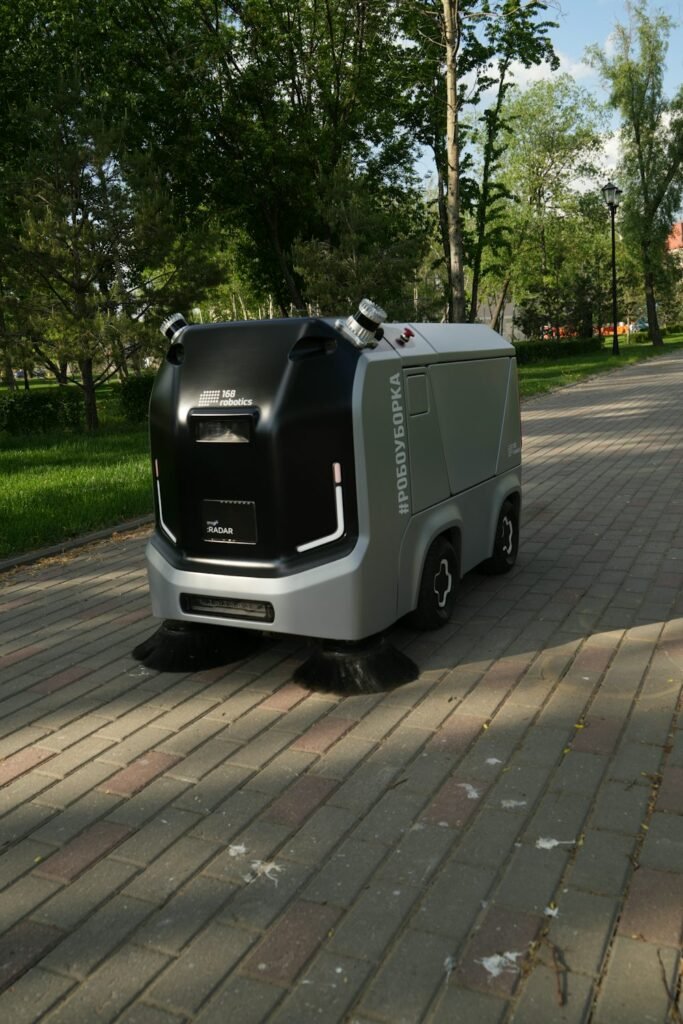Read More
Introduction
The landscape of transportation is undergoing a monumental shift with the advent of self-driving cars. These autonomous vehicles promise to redefine how we commute, offering a glimpse into a future where technology takes the wheel. Understanding the future of self-driving cars is crucial as their development accelerates, influencing various aspects of our lives.
Technological Advancements
The backbone of self-driving cars lies in cutting-edge technological advancements. Artificial intelligence (AI) and machine learning are at the forefront, enabling vehicles to learn from vast amounts of data and make split-second decisions. These technologies allow cars to navigate complex environments, recognize obstacles, and adapt to changing road conditions.
click photo below to read more about AI

Moreover, sensors and cameras have seen significant improvements. Lidar, radar, and high-resolution cameras work in tandem to create a comprehensive view of the vehicle’s surroundings. These sensors are crucial for detecting other vehicles, pedestrians, and road signs, ensuring safe and efficient navigation.

Safety and Regulations
Safety remains a top concern in the development of self-driving cars. Current safety standards are evolving, with rigorous testing and validation processes in place. Autonomous vehicles must prove their reliability before they can be trusted on public roads.
Future regulatory changes will play a pivotal role in the widespread adoption of self-driving cars. Governments and regulatory bodies are working to establish guidelines that ensure these vehicles operate safely and ethically. This involves creating new laws around liability, data privacy, and operational standards.
Impact on Transportation
The impact of self-driving cars on transportation systems cannot be understated. These vehicles have the potential to revolutionize public transportation by offering flexible, on-demand services. Autonomous buses and shuttles could provide efficient and cost-effective solutions for urban areas, reducing congestion and lowering transportation costs.
For personal vehicle ownership, self-driving cars present a paradigm shift. Car ownership models may evolve, with more people opting for shared or subscription-based services. This could lead to fewer vehicles on the road, decreased traffic congestion, and reduced demand for parking spaces.
Environmental Considerations
The environmental benefits of self-driving cars are significant. By optimizing driving patterns and reducing idle times, these vehicles can decrease fuel consumption and emissions. Many self-driving cars are expected to be electric, further enhancing their environmental credentials.
Electric autonomous vehicles contribute to energy efficiency by utilizing renewable energy sources for charging. As the technology matures, it will play a critical role in reducing the automotive industry’s carbon footprint.

Economic Implications
The rise of self-driving cars will reshape the economy in several ways. The job market, particularly in driving-related roles, will experience significant changes. While some positions may be displaced, new opportunities in technology, vehicle maintenance, and infrastructure development are likely to emerge.
The cost of implementing and maintaining self-driving technology is another consideration. Initially, these vehicles may be expensive due to the advanced technology they incorporate. However, as production scales and technology becomes more widespread, costs are expected to decrease, making them more accessible to consumers.
Infrastructure Development
For self-driving cars to operate seamlessly, infrastructure development is crucial. Smart cities and roadways equipped with advanced communication systems will support the integration of autonomous vehicles. This includes real-time traffic management, smart traffic signals, and dedicated lanes for autonomous vehicles.
Investing in infrastructure enhancements will be necessary to accommodate self-driving cars. Governments and private entities must collaborate to ensure these vehicles can navigate safely and efficiently within existing urban frameworks.

Ethical and Social Issues
The deployment of self-driving cars raises several ethical and social issues. One major concern is decision-making in critical situations. Autonomous vehicles must be programmed to handle complex ethical dilemmas, such as choosing between two adverse outcomes in an unavoidable accident scenario.
Privacy concerns also arise with the data collected by these vehicles. Self-driving cars rely on continuous data collection to function effectively, raising questions about who owns this data and how it will be used.
Consumer Acceptance and Trust
Building consumer acceptance and trust is vital for the success of self-driving cars. Public perception will largely determine adoption rates and market growth. Transparent communication about the safety and benefits of autonomous vehicles is essential to gain consumer confidence.
Education and awareness campaigns can help demystify the technology and address public concerns. As more people experience the convenience and safety of self-driving cars, acceptance is expected to grow.
Partnerships and Collaborations
The development of self-driving cars is a collaborative effort involving various stakeholders. Key players in the automotive and tech industries are forming partnerships to accelerate innovation. Collaborations between technology companies and automakers are essential to integrate advanced systems into vehicles.
Public-private partnerships will also play a crucial role in infrastructure development and regulatory alignment. These collaborations will help create a supportive ecosystem for the deployment of self-driving cars.
Legal and Insurance Challenges
The introduction of self-driving cars presents new legal and insurance challenges. Determining liability in accidents involving autonomous vehicles is a complex issue. Traditional models of liability may need to be redefined to account for the role of technology in driving.
Insurance policies will also need to adapt to these new circumstances. Insurers must develop products that address the unique risks associated with self-driving cars, taking into account factors such as software reliability and cybersecurity.
Future Predictions and Trends
Experts predict that self-driving cars will become increasingly common over the next decade. As technology continues to evolve, these vehicles will become more reliable and affordable. Emerging trends, such as vehicle-to-everything (V2X) communication and enhanced AI capabilities, will further shape the future of self-driving cars.
The timeline for widespread adoption will depend on several factors, including technological advancements, regulatory developments, and consumer acceptance. However, the trajectory is clear: self-driving cars are set to become a significant part of our transportation landscape.
Conclusion
The future of self-driving cars is both promising and complex. As these vehicles continue to evolve, they will bring about significant changes in transportation, the economy, and society. Continued advancements, ethical considerations, and consumer acceptance will shape how self-driving cars integrate into our daily lives.
Understanding the future of self-driving cars is key to preparing for the transformative changes they will bring. As we move forward, embracing this technology responsibly and thoughtfully will be crucial in realizing its full potential.

FAQs
1. What are self-driving cars?
Self-driving cars, also known as autonomous vehicles, use AI, sensors, and cameras to navigate and operate without human intervention.
2. How do self-driving cars work?
They rely on a combination of sensors, cameras, and advanced algorithms to perceive their environment, make decisions, and control the vehicle’s movement.
3. Are self-driving cars safe?
Safety is a top priority for self-driving cars. They undergo rigorous testing to ensure reliability and minimize risks. However, regulatory standards are still evolving.
4. What impact will self-driving cars have on jobs?
While some driving-related jobs may be affected, new opportunities in technology, maintenance, and infrastructure development are likely to emerge.
5. How will self-driving cars affect the environment?
Self-driving cars can reduce emissions and improve fuel efficiency, especially if they are electric. They optimize driving patterns and reduce idle times.
6. What are the legal challenges of self-driving cars?
Determining liability in accidents and adapting insurance models are significant legal challenges. New laws and regulations will be needed to address these issues.
7. When will self-driving cars be widely available?
Experts predict that widespread adoption could occur within the next decade, depending on technological advancements and regulatory developments.
8. How do self-driving cars handle ethical dilemmas?
Autonomous vehicles are programmed to make decisions in critical situations, but ethical dilemmas remain a complex issue that developers and regulators are addressing.
9. Will self-driving cars eliminate traffic congestion?
While they can optimize traffic flow and reduce congestion, the overall impact depends on widespread adoption and infrastructure improvements.
10. How can I trust self-driving technology?
Building consumer trust involves transparent communication about safety, benefits, and rigorous testing. Public education and awareness are key to acceptance.

Nice
Very good
Isn’t this what we’re afraid of